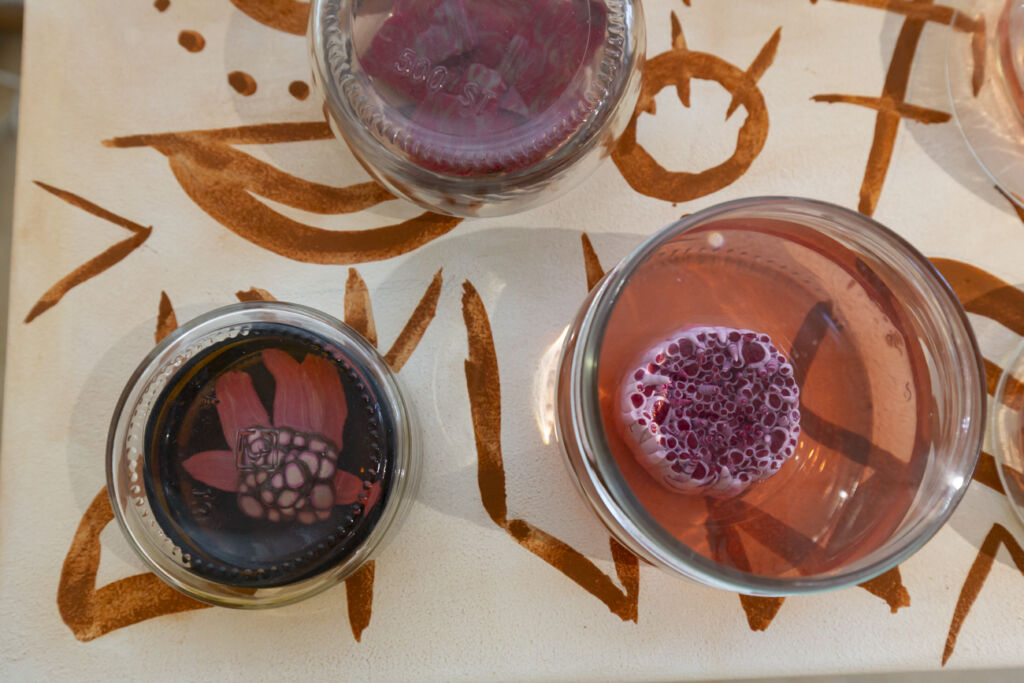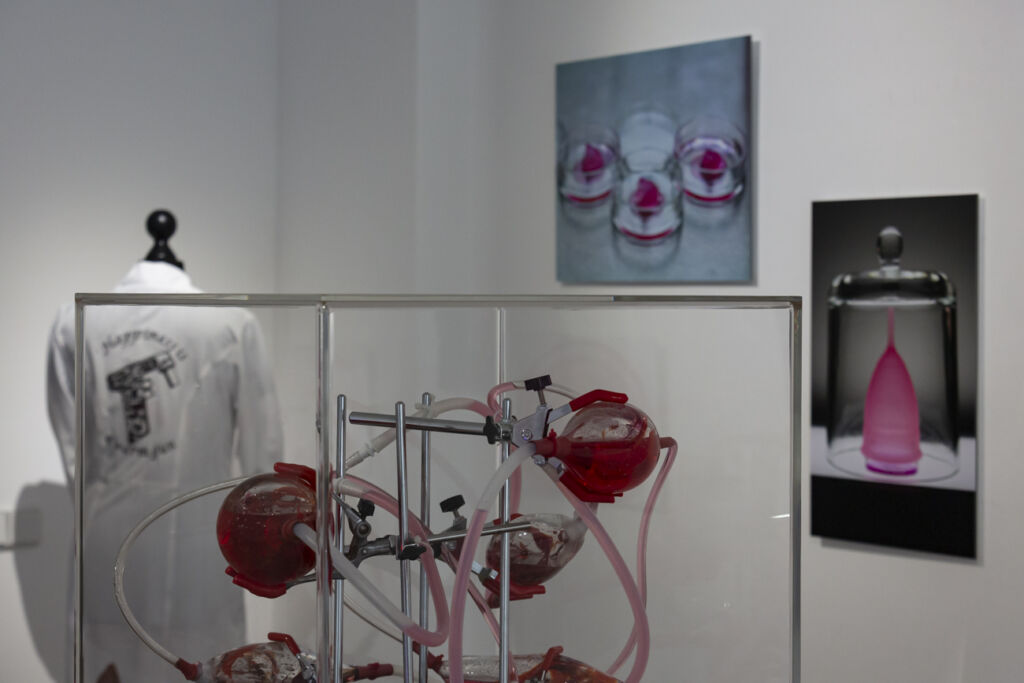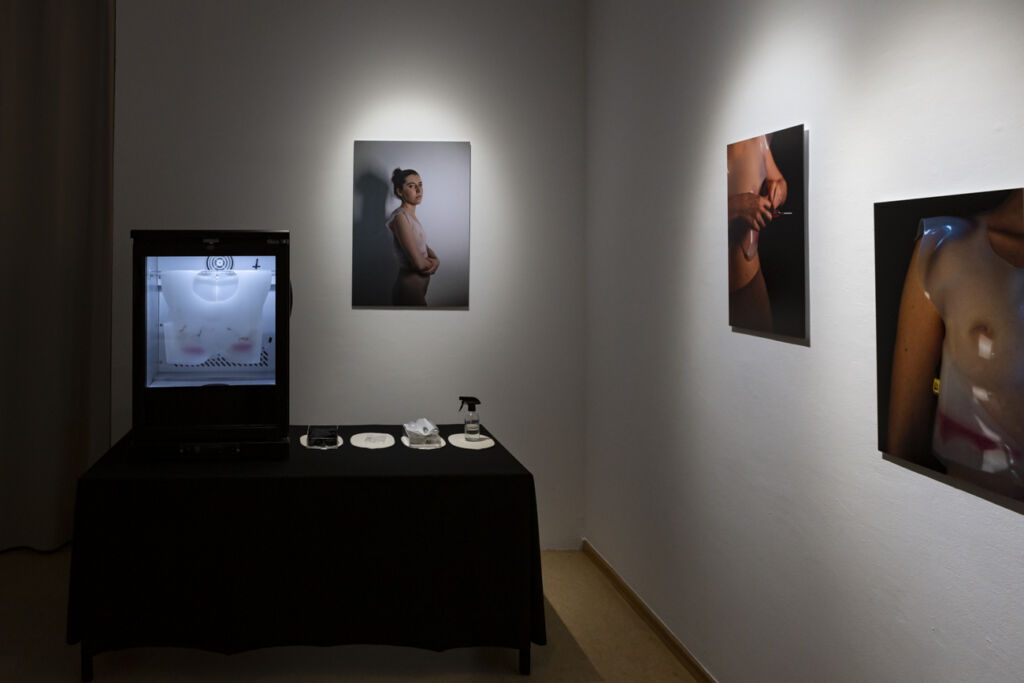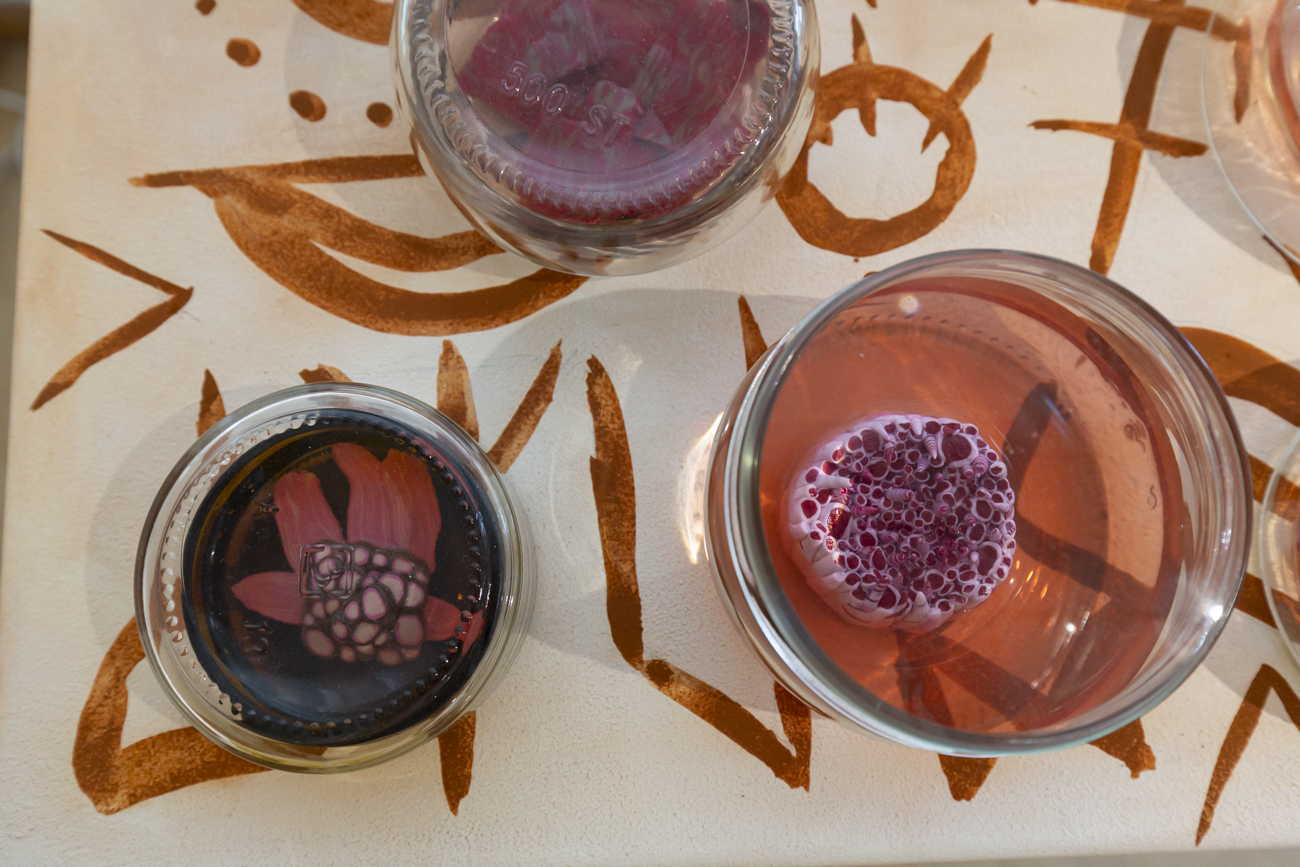Text by Juliette Wallace

It’s a beautiful, sunny day in west Berlin. The streets feel alive and inviting. Walking down the modest but pretty Prinzenallee, where Art Laboratory Berlin’s (ALB) gallery space is housed, the air feels still and full of vibrations (a fitting sensation considering what is happening nearby). Across the road from the gallery is a classic Berlin facade – tall and lightly decorated – with an equally classic red-brick Hinterhof (courtyard) guarded by an affectionate black and white dog. Much like the streets, the Hinterhof is bathed in sunshine, and the seating areas are peppered with occupants of the building cradling steaming mugs brought down from their homes or studios. Despite the lovely weather and sociable vibes of the outside world, a group of curious art and science lovers have opted to spend four days indoors at number 58 Prinzenallee, where the event, Matter of Flux Festival, is taking place.
Conceived in its infancy by Regine Rapp, Christian de Lutz, and Tuçe Erel, the multifaceted Matter of Flux Festival made it its mission to look at key issues of our contemporary world. Six clusters were established: CRITICAL HISTORY OF TECHNOLOGY, LEAKY CYCLES, TECHNOLOGIES/ SENSORS/ INTERFACES, PLANT ENCOUNTERS, ALTERNATIVE KNOWLEDGE PRODUCTION and HYDRO-RELATIONS, which provided a springboard from which to address fundamental and challenging subjects.
De Lutz explained: What was important was that the clusters be, in fact, clusters and not individual projects. They were formed organically through group discussions and needed to remain inter-connected. Identity politics, gender politics, scientific innovation and socio-environmental issues were addressed, and within these, deeper and more intricately extracted subjects were engaged with, spanning a surprisingly broad scope and touching on sometimes unexpected areas. These included (but were not limited to): genetic coding and predisposition to cancer, the power of menstrual blood, feminism and the female form, an exploration into the technological expansion of sensorial possibilities, the properties of soil and below-earth communication systems, international gender-politics in the lab and mechanical wombs. Through biographical, individual accounts, and scientific/creative explorations, the big and, at times contentious, subjects of our world were breached and unmasked.
Considering that sensitive, stimulating and challenging topics were at the core of Matter of Flux, a certain level of care was necessary to handle the event. The whole affair was more than an art/tech festival – it was the catalyst for the creation of a community of thinkers and doers, of feelers and visionaries, of empathetic individuals with the desire to understand and make changes to the world at large. As the Art Laboratory Berlin website states: the event was made by women/FLINTA*, for women/FLINTA* (an abbreviation and stands for women, lesbian, intersex, non-binary, trans and agender persons.- it is a term that was developed in Berlin years ago).
A Matter of Flux, controversially, was limited to only women/FLINTA* guests, excluding cis men from its audience. These parameters were considered carefully by the event’s organisers and deemed necessary in creating a “safe space” – a man-free zone – in which participants could freely explore, discuss and present new and sensitive topics for and about non-men to their fellow women/FLINTA*. As de Lutz put it, I’m here in the gallery whilst the others at the event and that’s how it should be. It’s four days out of a year where white cis men cannot participate. This is important considering the current climate. It could be a rule that we reconsider in the future but, for now, this feels right. Could this possibly be the beginning of a new world run by and for women/FLINTA*? As far as A Matter of Flux is concerned, it very well may be.
The audience was as important to the fabric of the event as those who presented—the morning of the first day of this four-day happening hosted an introductory lecture and a series of artist’s talks that engaged directly with the exhibition housed in the Art Laboratory Berlin gallery space. These first sessions were set up in the format of classic panel discussions, with speakers behind a long table at the front of the room and rows of seats leading backwards towards the exit. Despite the early start, the room was almost at full capacity and the energy was tangible. The space was inhabited by a sea of women and FLINTA*. It was clear that nobody was there through some passive, fleeting interest but, rather, because they wanted to hear what was being said and participate in the activities and exchanges that Matter of Flux stimulated. It’s safe to say that the hungry audience was richly rewarded.




The Witch in the Lab Coat by WhiteFeather Hunter – a piece that explores the intersection of feminist witchcraft and tissue engineering using menstrual blood as the basis for the creation of an disembodied ‘body’ – and Self-Care – a research piece born from the artist’s predisposition to breast cancer resulting in the growth and care of cancerous cells in an isolated, custom-created silicon vest – by Lyndsey Walsh, kicked off the event as the subject of artists talks. Both were also displayed as physical works (alongside another piece by Shu Lea Cheang and Ewen Chardronnet) in the Matter of Flux exhibition at ALB.
In the talk, Hunter and Walsh, who have an academic history together but whose works were separate, stripped themselves bare as they passionately presented their ground-breaking and emotionally challenging projects, bouncing off each other in the questions segment of the talk with enthusiasm and a deep knowledge of their respective areas. Their innovative approaches and confidence in presenting (literally in WhiteFeather’s case) pieces of their own bodies was inspiring. It was also thrilling to learn that the corresponding artworks were alive and growing in their protected environments at the ALB gallery over the road.
As well as discussing their own history and the process of their works, the artists shed light on the disturbing bureaucratic hoops that they had to jump (at times, force themselves) through, including the aversion to menstrual blood in the lab by a primarily male research team and the comically ridiculous journey of a group of cells from Australia to Germany. The courage and sharpness of these artists provided a lens to something much bigger than their own works.
As the morning came to a close, the vibes were set. The room was now being prepared for the afternoon’s activities, with pillows distributed in a circle on the floor and participants roly-polying around the space in a display of camaraderie and freedom and in anticipation of the upcoming TECHNOLOGIES. SENSORS. INTERFACES Octopussyntric workshop.
Matter of Flux was to continue to unfold in as it had started: in exciting, touching and engaging ways. Glitter kitchens and zine-making workshops; field trips to cemeteries and machine communication groups; storytelling sessions and artist studio visits would take place over the next four days. It was impressive to see how successfully ALB brought together such a diverse group of participants in staging a well-planned program of stimulating events. Considering the length and scope of the program, there was never a dull moment, and everybody present continued to be fully engaged and honourably open in their participation.
Another highlight of the festival was the Hydro-Relations Workshop which explored the role of water historically and today through the lens of transportation and communication. The workshop began off-site at a nearby river bank and started with a meditation session – an excellent way to begin a workshop! Now that our minds were centred, our connection to water established and our sensory systems ‘tapped into’ the group was then led by the leaders of the workshop – artist and researcher, Jemma Woolmore, curator and writer Lena Johanna Reisner, artist and designer Nayeli Vega, and artist Sarah Hermanutz – back into the festival building to discuss and explore the meaning of water as host, messenger, life-source and killer.
A sculptural installation based on the concept of water vessels and the role of H2O was at the core of the workshop. It provided a perfect centrepiece for further discussions on extra-human relations and the significance of our familiar friend: water. It is a treat to be given a new entryway into something that is so often taken for granted, and the effects are lasting, changing your perception of your surroundings in a significant and enduring way.
The playful SMELL workshop also explored the idea of turning something seemingly banal into something new and exciting. Bad smells are part of everyday life, especially in a city like Berlin. Still, this mystical, magical workshop took our quotidian stenches and rooted them in curious ancient Roman times – beginning with Rome’s first witch – where superstition ruled and women were sacrificed for the most normal of things. Commonplace body odours produced by female hormones and functions were deemed deathly offensive by the patriarchy and warranted torturous ends to their possessors.
As was the case with all other events throughout the Matter of Flux festival, the leaders of the workshop – artist Lyndsey Walsh, whose work we are already familiar with, and fellow artist Alanna Lynch – were engaged and exciting, bringing the history of witch trials and ancient Rome to life through time-travelling stenches and animated explanations and discussions. Like in their introductory artist’s talk, Lyndsay Walsh was powerful and knowledgeable, underlining the contradictions in established logic and bringing their cutting and ironic humour to the workshop. The group, who was asked to bring a stinky contribution of their own to the mix, spent much of the time laughing and were visibly excited, thrilled to be presented with the selection of various odours presented by their peers with whom they worked to both explore and create in this very particular context.
This article has outlined simply a small selection of many powerful and fascinating facets of the Matter of Flux Festival. This author recommends the reader explore the Art Laboratory Berlin website and visit the gallery space in person if they’re in Berlin. You will feel part of something big; hopefully, the event will become regular. If it does, it could be the earth from which future innovations and world policies sprout.






